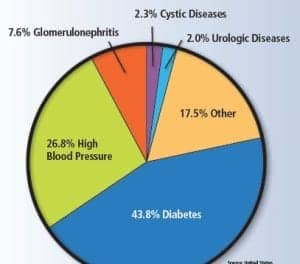The American Association of Clinical Endocrinologists (AACE) today has approved the use of A1c as an additional diagnostic criterion for type 2 diabetes.
An A1c of 6.5 or greater is now considered an alternate criterion for the diagnosis of type 2 diabetes.
The decision was announced in a position statement entitled "The AACE/ACE Statement on the Use of A1c for the Diagnosis of Diabetes." The position statement can be found online here. The position statement also reviews the limitations of the test. For example, certain ethnic groups may have marginally elevated values which do not necessarily indicate diabetes.
"Using A1c will provide doctors and patients a convenient additional tool to diagnose diabetes and thereby identify more patients with it," said Dr. Jeffrey R Garber, president of AACE.
A1c is a test that is used to determine the average level of blood glucose over a prior three month period. It is currently used to measure glucose control in patients already diagnosed with diabetes. The test requires a single blood draw, and the results can be available the same day.
The most common criteria currently used to diagnose diabetes are a fasting glucose of 126 or greater or a 2 hour value on a glucose tolerance test (GTT) greater than 200. Both tests require patients to fast for a minimum of eight hours prior to being tested. The GTT is a 2 hour series of glucose levels following the administration of a large amount of glucose.
The AACE Guidelines for the Management of Diabetes (link) use A1c of 6.5 or less as a goal for patients once they have been diagnosed with type 2 diabetes.
About the American Association of Clinical Endocrinologists (AACE)
Source: AACE




